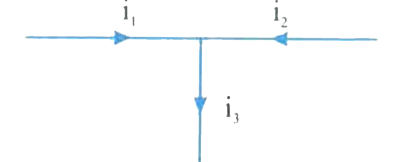The following equations represent progressive transverse waves
z1=Acos(ωt−kx)
z2=Acos(ωt+kx)
z3=Acos(ωt+ky)
z4=Acos(2ωt−2ky)
A stationary wave will be formed by superposing
Z1andZ2
Z1andZ4
Z2andZ3
Z3andZ4
The correct Answer is:A
Step by step video, text & image solution for The following equations represent progressive transverse waves z_(1) = A cos ( omega t - kx) z_(2) = A cos ( omega t + kx) z_(3) = A cos ( omega t + ky) z_(4) = A cos (2 omega t - 2 ky) A stationary wave will be formed by superposing by Physics experts to help you in doubts & scoring excellent marks in Class 11 exams.
Updated on:21/07/2023Topper's Solved these Questions
- WAVES AND SOUNDBOOK - ERRORLESS CHAPTER - WAVES AND SOUNDEXERCISE - Vibration of string
52 Videos
- WAVES AND SOUNDBOOK - ERRORLESS CHAPTER - WAVES AND SOUNDEXERCISE - Organ pipe
53 Videos
- WAVES AND SOUNDBOOK - ERRORLESS CHAPTER - WAVES AND SOUNDEXERCISE - Beats
51 Videos
- VECTORSBOOK - ERRORLESS CHAPTER - VECTORSEXERCISE - Exercise
223 Videos
- WORK , ENERGY , POWER AND COLLISIONBOOK - ERRORLESS CHAPTER - WORK , ENERGY , POWER AND COLLISIONEXERCISE - Self Evaluation Test
19 Videos
Similar Questions
The following equations represent transverse waves :
z1=Acos(kx−ωt),
z2=Acos(kx+ωt), z3=Acos(ky−ωt)
Identify the combineation (s) of the waves which will produce (i) standing wave(s), (ii) awave travelling in the direction making an angle of 45∘ degrees with the positive x and positive y axes. In each case, find the positions at which the resultant is always zero.
View SolutionIf i1=3sinωt and i2=6cosωt, then i3 is

View Solution
Knowledge Check
If i1=3sinωtand(i2)=4cosωt, then (i3) is
 A5sin(ωt+53∘)B5sin(ωt+37∘)C5sin(ωt+45∘)D5sin(ωt+35∘)
A5sin(ωt+53∘)B5sin(ωt+37∘)C5sin(ωt+45∘)D5sin(ωt+35∘)Three transverse waves are represented by
y1=Acos(kx−ωt)
y2=Acos(kx+ωt)
y3=Acos(ky−ωt)
The combination of waves which can produce stationary waves isAy1andy2By2andy3Cy1andy3Dy1,y2andy3Wave equations of two particles are given by y1=asin(ωt−kx),y2=asin(kx+ωt), then
AThey are moving in opposite directionBPhase between them is 90∘CPhase between them is 180∘DPhase between them is 0∘
y1=4sin(ωt + kx), y2 = -4 cos(ωt + kx), the phase difference is
View SolutionThe r.m.s. value of I=I1sinωt+I2cosωt is
View SolutionThe r.m.s. value of I=I1sinωt+I2cosωt is
View SolutionWhich two of the given transverse waves will give stationary wave when get superimposed?
z1=acos(kx−ωt) (A)
z2=acos(kx+ωt) (B)
z3=acos(ky−ωt) (C)
View SolutionThe ratio of amplitudes of following SHM is x1=Asinωtandx2=Asinωt+Acosωt
View Solution
